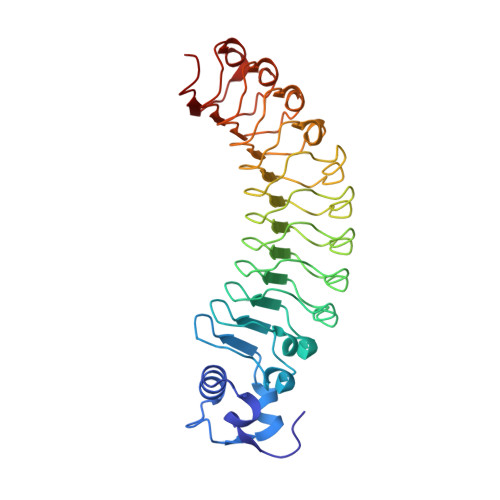Control of repeat-protein curvature by computational protein design.
Park, K., Shen, B.W., Parmeggiani, F., Huang, P.S., Stoddard, B.L., Baker, D.(2015) Nat Struct Mol Biol 22: 167-174
- PubMed: 25580576
- DOI: https://doi.org/10.1038/nsmb.2938
- Primary Citation of Related Structures:
4R58, 4R5C, 4R5D, 4R6F, 4R6G, 4R6J - PubMed Abstract:
Shape complementarity is an important component of molecular recognition, and the ability to precisely adjust the shape of a binding scaffold to match a target of interest would greatly facilitate the creation of high-affinity protein reagents and therapeutics. Here we describe a general approach to control the shape of the binding surface on repeat-protein scaffolds and apply it to leucine-rich-repeat proteins. First, self-compatible building-block modules are designed that, when polymerized, generate surfaces with unique but constant curvatures. Second, a set of junction modules that connect the different building blocks are designed. Finally, new proteins with custom-designed shapes are generated by appropriately combining building-block and junction modules. Crystal structures of the designs illustrate the power of the approach in controlling repeat-protein curvature.
- 1] Department of Biochemistry, University of Washington, Seattle, Washington, USA. [2] Institute for Protein Design, University of Washington, Seattle, Washington, USA.
Organizational Affiliation:

















